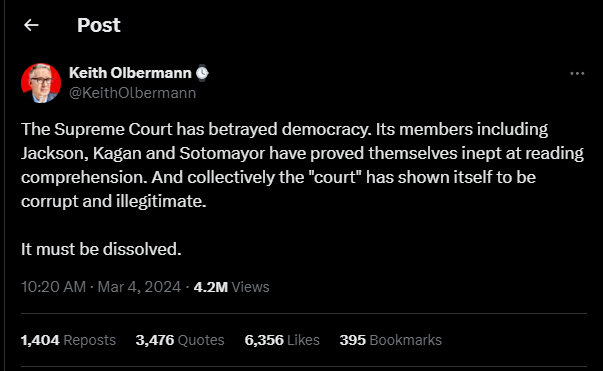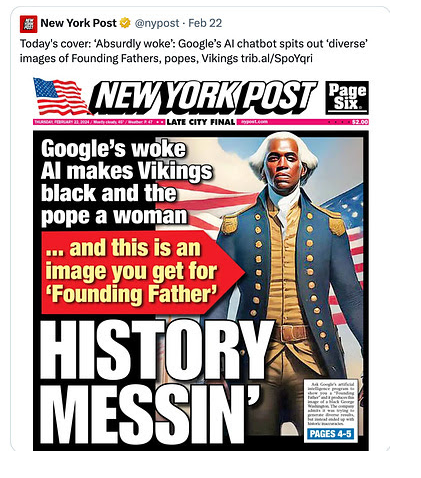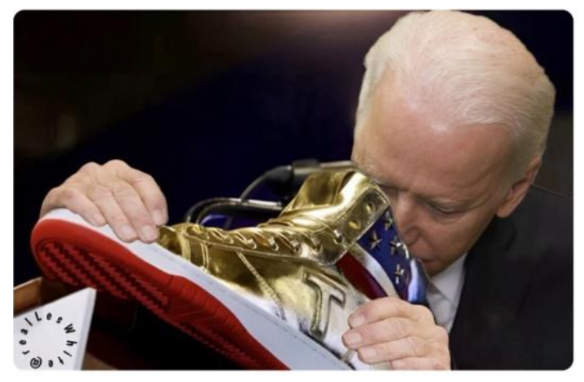-
Posts
8,938 -
Joined
-
Last visited
-
Days Won
46
Content Type
Profiles
Forums
Gallery
Store
Articles
Events
Posts posted by Muda69
-
-
Quote
Republican Sen. Mike Braun is the frontrunner to become Indiana's next governor. He has name ID, cash and endorsements from Donald Trump and Americans for Prosperity — a winning formula for a Republican primary contender.
Whoever wins the Republican primary will probably win in November, as well. Indiana power players across the political spectrum are apprehensive about the prospects of a Braun administration, but time is running out to stop him.
The Braun freakout is getting real — and the Republican primary is about to turn nuclear with two months to go before Election Day.
The Indiana Capital Chronicle reports IU Health CEO Dennis Murphy has written to 25 of his heavy-hitting industry peers, urging them to donate money to Republican Brad Chambers. Murphy writes that Braun and Eric Doden, another wealthy Republican, "have gone on record to put forward ideas that would be very harmful to our industry and to our individual institutions."
Considering that Doden is a longshot candidate, Murphy is essentially talking about Braun. Murphy’s view seems to be that Braun will force health systems to reduce costs to an unreasonable extent and Chambers will be friendlier. The health care industry is not alone in concerns about Braun’s posture toward businesses.
There’s a debate to be had over nonprofit hospitals and their finances. Nonetheless, many influential Hoosiers, from mayors to business leaders, view an impending Braun administration as a train wreck, likely to be as polarizing as Mike Pence's, yet less competent.
Braun's tenure as a U.S. senator, by his own admission, has been less than inspiring. Despite being a nonfactor in the Senate, Braun for some reason told Politico, "I think I can do more by going back home."
Yeah, probably not.
Braun has lacked any apparent guiding principle while also demonstrating little interest in helping people "back home." In the course of interviewing many people over the past few years, I've heard plenty of examples of how Sen. Todd Young's office has offered assistance in a multitude of ways, but I can't think of a single person who has volunteered a similar anecdote about Braun's office.
....
Murphy clearly intended for his letter to go public, which tells us two things: Braun's legions of detractors are restless and they want to go on the attack. All the health care executives in the world can't help Chambers become more appealing, but they can pool resources to redefine Braun as an amoral failure obsessed with being a career politician.
Is there a market for that message in a state where Trump's word carries immense weight? Maybe.
The Republican primary for Indiana governor mirrors the presidential primary in some ways. Dissatisfaction with Braun runs deep among establishment Republicans, but that doesn't matter if no one else knows how to beat him.
Unlike in the presidential primary, though, Braun's opponents appear poised to at least try to take him down before it's too late.
Could be fun, if you like watching incessant political ads.
-
8 hours ago, HoopsCoach said:
Looks like a cross between Field of Dreams and Deliverance.
All of the former, none of the latter. It is a remote, beautiful place.
-
-
-
Who has the longer arms?
-
 1
1
-
-
48 minutes ago, Boilernation said:
a trend where the top tier guys avoid combine related activities.
I've yet to hear a convincing argument on why this is a good idea, if one wants to play in the NFL.
-
There is only one Illinois high school football field worth visiting/playing a game on and that is Fleur De Lis Field in Greenfield, Illinois. Home of the Greenfield-NW Tigers. High school football perfection:


As this article states:
QuoteThere are a few modern football facilities across central Illinois but then there is the uniqueness of the home field at Greenfield, now a co-op with Palmyra Northwestern.
The first thing I remember about the field is the hillside terrace seating, which rises above the football field just to the west. Fans mostly sit on the grassy hill which has approximately five seating levels cut out into it. The team takes the field by descending the stairs to the delight of the fans.
To the east of the field is the tree-lined Rubicon Creek. While the press box is tiny, I remember there was some good food to be found there for game workers and such. After I had a bite to eat, reporters could either walk the field during the game or stand on the scaffolding just below the press box.
-
 1
1
-
-
What a tool:

-
 1
1
-
 1
1
-
-
https://www.avclub.com/richard-lewis-star-of-curb-your-enthusian-dies-at-76-1851294954
QuoteRichard Lewis, the surly staple of the American stand-up comedian scene and an actor known for his 20-year-long role as Larry David’s best friend on Curb Your Enthusiasm, died of a heart attack last night at his home in Los Angeles, his publicist Jeff Abraham confirmed to Deadline. He was 76 years old.
Lewis’ declining health had long been a concern. In April 2023, Lewis shared his diagnosis of Parkinson’s disease, a condition he had been living with for years before he shared the news. He also shared that he was retiring from performing standup at the same time.
Truly an American Comedy great. He will be missed.
-
20 minutes ago, CoachGallogly said:
So now you’re good with it…got it
Again, not the optimal result. But as an adult living in the real world I know how things work.
-
2 hours ago, CoachGallogly said:
But that’s not actually what you’ve advocated for. You’ve stated that the Hot Dogs should join the HHC countless times, and in each you never opined to keep the Sagamore name.
Yes, joining the Hoosier Heartland Conference would IMHO be the optimal choice for FHS. But we always don't get our optimal choice in life, do we Mr. Gallogly? I'll take this compromise as a small win, maybe a stepping stone to something later. And you can continue with your gotcha attempts.
-
Quote
Wendy's is expected to roll out a dynamic pricing model similar to Uber's surge-pricing as soon as next year.
"Beginning as early as 2025, we will begin testing a variety of enhanced features on these digital menu boards like dynamic pricing, different offerings in certain parts of the day, AI-enabled menu changes and suggestive selling based on factors such as weather," a spokesperson confirmed to Fox News Digital after Wendy’s CEO Kirk Tanner announced it on an earnings call earlier this month.
The spokesperson said this pricing overhaul is part of a "number of features" that will be tested by the fast food giant.
"At Wendy’s, we’re focused on providing great tasting, fresh, high-quality food and doing it in a way that brings value to our customers. As we’ve previously shared, we are making a significant investment to accelerate our digital business. In addition to evolving our loyalty program, we are leveraging technology even more with the roll out of digital menu boards in some U.S. restaurants," the spokesperson said.
Dynamic pricing, also known as surge pricing, is when the price of a product or service fluctuates according to demand or other factors, such as calling for an Uber ride during rush hour or bad weather.
The Wendy's spokesperson went on to tell Fox News Digital that dynamic pricing can "allow Wendy's to be competitive and flexible with pricing, motivate customers to visit and provide them with the food they love at a great value. We will test a number of features that we think will provide an enhanced customer and crew experience."
However, associate professor of economics at George Washington University Steven Suranovic told The Daily Mail, "They could shoot themselves in the foot by introducing something customers aren't ready for."
...
Shoot themselves in the foot is right. Consumers are going to ask why is the hamburger I paid $3 for yesterday $5 today? I'll just go next door or down the street to McDonalds, Burger King, etc.
-
 1
1
-
-
https://mises.org/wire/javier-milei-ended-dc-sized-deficit-innine-weeks
QuoteArgentina’s Javier Milei is racking up some solid wins, with the fiscal basket case seeing its first monthly budget surplus in 12 years.
Apparently, it took Milei just nine and a half weeks to balance a budget that was projected at 5% of GDP under the previous government. In US terms, he turned a 1.2 trillion-dollar annual deficit into a 400 billion surplus. In 9 and a half weeks.
How did he do it? Easy: he cut a host of central government agency budgets by 50% while slashing crony contracts and activist handouts.
For perspective, if you cut the entirety of Washington's budget by 50%, you'd save a fast 3 trillion dollars and start paying off the national debt.
It turns out it can be done, and the world doesn't collapse into chaos.
Milei Making Fast Progress
Deficits aren’t the only win Milei's logged. He’s slashed crony regulation, got rid of currency controls, and recently slashed rent prices by removing controls — that actually led to a doubling of apartments for rent in Buenos Aires, slashing rent costs.
Unfortunately, it's not all smooth sailing: a bill to privatize corrupt state-owned companies — to effectively de-Soviet the Argentine economy — was blocked by the socialist opposition who serve the government unions who would lose their jobs.
Meanwhile, a major Milei reform to make it a lot easier to hire people but would hurt unions was struck down by the high court, which said it must go through Congress.
Having said that, for the average Argentinian, these are deckchairs on the Titanic compared to the elephant in the economy: Argentina's hyperinflation.
Just last week, the monthly inflation figure came in at 20.6% — on the month. That was a lot better than the outgoing government, but it still left year-on-year inflation at 254%.
Why so high? Partly because Milei had to free up the exchange rate to smooth the path to dollarization — for Argentina adopting the US dollar instead of the local confetti.
But mostly because the rivers of money printed by the previous socialists continue to run through the battered ruins they left of Argentina's economy. After all, Milei's only been in office for two months.
Argentina’s Dollarization
Milei's reforms will continue to be trench warfare. But his inflation progress is going to be key to retaining support.
He just notched a big win with the deficit, but it only stops the bleeding — the patient is still on life support.
To fully kill Argentina's hyperinflation, Milei would need to make real progress on the dollarization — or, dare we dream, a gold standard. On dollarization, that would involve announcing a months-long window for peso assets to be revalued in dollars.
He's been preparing the groundwork so far — the currency controls and deficits are a big help. And he's surely motivated to do it since dollarization in other countries like did it like Ecuador has 90% public support. But it is a complicated process, and if done badly, he'll be dead in the water.
The stakes are high. And not just for Argentina: If Milei succeeds, he'll be a model for radically shrinking government in other countries in Latin America, in the rest of the world, and even for our spineless goblins in Washington.
Spineless goblins is right. And it is interesting that I haven't read about this in the MSM. Has anybody?
-
15 hours ago, CoachGallogly said:
Muda you’ve been screaming for over a decade that Frankfort should leave the Sagamore, and now that they have you are complaining about that. After 20 years of listening to you I think it might actually be possible that you just like to complain, and that you dont actually care about the issues you rage against. 😜
And you would be wrong sir. Sure, I think Frankfort should have left the Sagamore, and it actually did. But I still believe the smarter choice of action would have been for the 5 schools to kick out the 3, not some kind of backroom machinations that caused the 5 to leave with their tails between their legs. Then Cascade, North Putnam, and Greencastle would be invited. This new conference, the SDWCIkoAC, IMHO has a mix of schools and programs where hopefully the Hot Dogs will be more competitive. And that doesn't mean I have to like or agree with the name of this new conference.
-
56 minutes ago, Cloudy14 said:
Nice name and good luck to the new conference - Sagamore #2 probably would get confusing.
The TRSAC - The REAL Sagamore Athletic Conference would also be an acceptable name.
-
-
On 2/24/2024 at 5:19 PM, Frozen Tundra said:
What would you have named it? Can’t call it the Sagamore.
SDWCIkoAC
Super-Duper West Central Indiana (kind of) Athletic Conference.
Just rolls off of the tongue
-
 1
1
-
-
What is the deal with these gawd awful black/grey uniforms both the IU men and women's teams have sported over the last couple of games? They are hideous, and look like some reject from an AAU team. And the last I checked black/grey wasn't in the IU school color scheme.
Gid rid of them. Fast.
-
Also, anybody able to get to www.mononathleticconference.com ? My browser is telling me that site can't be reached, and I've double checked the URL spelling (it's a mouthful) from the press release. Would be nice to peruse this new conference constitution.
-
22 minutes ago, 1st_and_10 said:
You are literally the only person that I have heard that doesn't like the new name.
Not everything is 100%, 1st_and_10. Dissension is healthy.
-
-
 1
1
-
-
1 hour ago, 1st_and_10 said:
They LEFT the Sagamore... They made the choice. If they would have voted to kick out the other 3 then they would have kept the name. It's not rocket science, Muda.
And as I have said that was the wrong decision. Now we have this frankly stupid conference name, named after a defunct railroad line. Really?
-
 1
1
-
 1
1
-
-
Yuck. Fighting to keep the Sagamore Conference name should have been the first choice.
-
 1
1
-
-












SCOTUS Takes on Chevron Deference
in OOB Forum
Posted
https://reason.com/2024/03/07/scotus-takes-on-federal-regulators/
One can hope indeed. And I wish for all these decades of rules and procedures foisted on the American people by the administrative state do come undone. Then the U.S. Congress will be forced for once to do it's job and legislate.